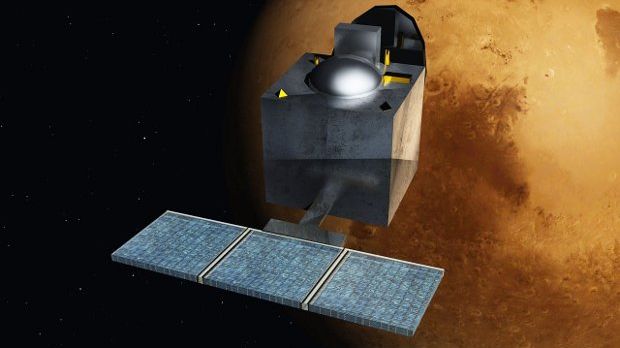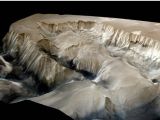This Monday, scientists at the Indian Space Research Organization (ISRO) released a series of images revealing the geography of the Ophir Chasma, a canyon on the surface of Mars.
The images, available in the gallery below, were obtained earlier this year, on July 19, by India's Mars orbiter, the Mangalyaan probe.
The spacecraft pictured Mars' Ophir Chasma from an altitude of 1,857 kilometers (1,154 miles), with the recently released views having a resolution of 96 meters (315 feet) per pixel.
Ophir Chasma is part of the largest canyon network in the Solar System
As noted, Mars' Ophir Chasma is a canyon measuring around 317 kilometers (197 miles) from one end to the other. Interestingly, the Ophir Chasma does not stand alone on the surface of the Red Planet.
Rather, it is part and parcel of a canyon system called Valles Marineris. This canyon system spans across about 4,000 kilometers (approximately 2,500 miles).
It is as wide as 200 kilometers (120 miles) in some portions and reaches a depth of 7 kilometers (nearly 4.5 miles). Astronomers agree that, at least for now, it is the largest such network of canyons in the Solar System.
As for the Ophir Chasma imaged by the Mangalyaan probe earlier this year, the Indian Space Research Organization describes it as having a rather complex geology.
“The walls of the Chasma contain many layers and the floors contain large deposits of layered materials,” the space agency explains in a statement released together with the images.
A total of 5 probes are now actively orbiting Mars, studying its makeup
The Red Planet might look like a quiet, desolate place, but it really isn't. There's a lot of commotion going on in the sky around it, what with the small army of probes that are now orbiting it and studying its makeup.
Presently, Mars has a total of 5 active spacecraft flying around it: NASA's 2001 Mars Odyssey, 2006 Mars Reconnaissance Orbiter and 2014 Mars Atmosphere and Volatile Evolution, ESA's 2003 Mars Express, and ISRO's 2014 Mangalyaan.
Space agencies expect that, a few years from now, they will manage to send crews of astronauts to the Red Planet. In fact, NASA even has a spacecraft and a rocket fit for the job in the making.

 14 DAY TRIAL //
14 DAY TRIAL // 



